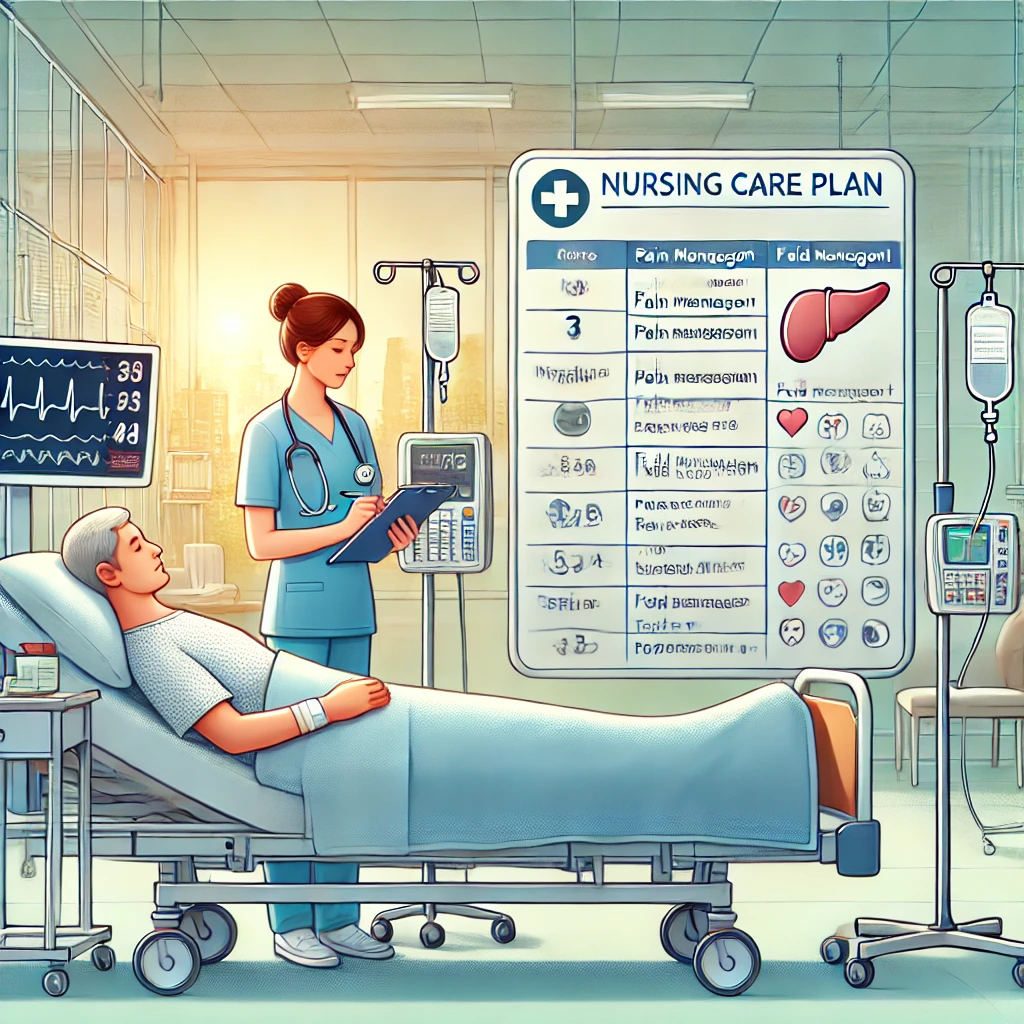NCP on Pancreatitis: Pancreatitis is when the pancreas, an organ that helps with digestion and controlling blood sugar, becomes inflamed or swollen. This can cause severe pain in the stomach, vomiting, fever, and other problems. Pancreatitis can be dangerous if not treated properly, so it’s important for nurses to know how to take care of patients with this condition.
Thank you for reading this post, don't forget to subscribe!
An NCP on pancreatitis (Nursing Care Plan) is a plan that helps nurses know what to do to take care of a patient with pancreatitis. It includes understanding the patient’s symptoms, giving the right medicine, keeping the patient comfortable, and preventing complications. This care plan helps nurses organize their work and provide the best care possible.
In this article, we will explain how to make a simple but effective NCP on pancreatitis. Whether you are just starting nursing school or already working as a nurse, knowing how to create a care plan will help you take better care of your patients. A good NCP helps nurses identify what the patient needs, set goals, and keep track of how the patient is doing.
Let’s break down the steps and learn how to create a nursing care plan for a patient with pancreatitis. We’ll go step by step, making it easy to understand and follow!


Patient Information:
(Note: The following patient information is completely fictional and for educational purposes only.)
- Name: Mr. Raghav Sharma
- Age: 45 years
- Gender: Male
- Medical History: Mr. Sharma has a history of drinking alcohol and has high blood pressure and high cholesterol.
- Type of Pancreatitis: Acute Pancreatitis (which means it started suddenly)
- Symptoms: Severe stomach pain, vomiting, nausea, and feeling weak.
- Diagnosis: Acute Pancreatitis
- Admission Date: 10th January 2025
- Care Plan Started: 11th January 2025
Nursing Care Plan for Pancreatitis
| Nursing Assessment | What the Patient Says (Subjective Data) | What the Nurse Observes (Objective Data) |
|---|---|---|
| 1. Vital Signs | “I feel weak and have a fever,” says Mr. Sharma. | Heart rate 120 beats per minute, temperature 38.5°C (101.3°F). |
| 2. Hydration Status | “I can’t drink much water,” the patient says. | Dry lips, skin looks dry, and very little urine is being passed. |
| 3. Pain Assessment | “The pain is sharp and it doesn’t go away,” Mr. Sharma says. | The patient is holding his stomach and looks in pain. |
| 4. Lab Tests | No complaints about tests. | Blood tests show higher than normal levels of amylase and lipase. |
Nursing Diagnosis for NCP on Pancreatitis
- Acute Pain related to inflammation in the pancreas, as shown by Mr. Sharma’s reports of stomach pain and discomfort.
- Risk for Fluid Loss due to vomiting and not drinking enough fluids, as shown by dry lips and little urine.
- Poor Nutrition because Mr. Sharma is having trouble eating, shown by weight loss and low blood protein levels.
- Risk of Infection because inflammation in the pancreas can lead to infection, as shown by fever and changes in blood tests.
- Anxiety and Stress related to being in the hospital and having a serious condition, shown by restlessness and trouble sleeping.

Nursing Interventions and Reasons for NCP on Pancreatitis
- Intervention: Give pain medicine as ordered by the doctor (like morphine or acetaminophen).
Reason: Pain relief is very important because it helps the patient feel better and reduces stress on the body, which can make pancreatitis worse. - Intervention: Check Mr. Sharma’s vital signs regularly (especially heart rate and blood pressure).
Reason: This helps to make sure his body is coping well with the illness and to catch any signs of problems early. - Intervention: Keep Mr. Sharma NPO (nothing by mouth) for a while, so his pancreas can rest.
Reason: Giving the pancreas time to heal is important. Eating or drinking might make the pain worse or irritate the pancreas. - Intervention: Give fluids through an IV to prevent dehydration and keep his body’s salt balance in check.
Reason: Fluids help keep the patient hydrated and prevent serious complications like kidney failure. - Intervention: Teach Mr. Sharma about avoiding alcohol and fatty foods after he leaves the hospital.
Reason: Alcohol and fatty foods can cause pancreatitis to come back, so it’s important to make these lifestyle changes for long-term health.
Nursing Goals for NCP on Pancreatitis
- Mr. Sharma will say his pain is less than 5/10 within 24 hours of starting pain medicine.
- Mr. Sharma will have better hydration, with normal skin and enough urine output within 48 hours.
- Mr. Sharma will be able to eat soft foods without vomiting by the third day of treatment.
- Mr. Sharma will understand the need to avoid alcohol and fatty foods to prevent future episodes of pancreatitis.
Evaluation and Expected Outcomes for NCP on Pancreatitis
- Evaluation: Mr. Sharma’s pain dropped to 4/10 within a day.
Outcome: Success – The pain medicine worked well, and the patient felt much better. - Evaluation: Mr. Sharma’s skin became less dry, and his urine output increased after he got IV fluids.
Outcome: Success – His hydration status improved, and he felt more energetic. - Evaluation: Mr. Sharma started eating soft foods and tolerated them without vomiting on day 3.
Outcome: Success – The patient was able to start eating again and felt stronger. - Evaluation: Mr. Sharma understood that avoiding alcohol and fatty foods was important for his health.
Outcome: Success – Mr. Sharma felt confident in making lifestyle changes to prevent future issues.
Frequently Asked Questions (FAQ)
- What is pancreatitis, and why is it so painful? Pancreatitis happens when the pancreas gets inflamed. This causes intense pain, especially in the upper abdomen, because the pancreas is irritated and swollen.
- How do nurses help manage pain for someone with pancreatitis? Nurses give pain medicine as prescribed, monitor how well the medicine is working, and make sure the patient is comfortable to help reduce the pain.
- Why do pancreatitis patients need to avoid food and drinks for a while? Avoiding food and drink helps the pancreas rest, so it can heal faster. Eating too soon can make the inflammation worse.
- How long does it take to recover from pancreatitis? It depends on how severe the pancreatitis is. With proper care, patients can start feeling better in a few days, but recovery may take longer if complications occur.
- Can pancreatitis be prevented? Yes, in many cases. Avoiding alcohol, eating a healthy diet, and managing conditions like high blood pressure and high cholesterol can help prevent pancreatitis.
Recommended Resources
- Pancreatitis Overview – Mayo Clinic
- Acute Pancreatitis – WebMD
- Nursing Care Plan for Pancreatitis – Nurse Journal
- Understanding Pancreatitis – MedlinePlus
Creating a NCP on pancreatitis helps nurses take care of their patients in a structured and effective way. By following these simple steps, nurses can make sure their patients feel better, recover faster, and avoid complications. Whether you’re just starting in nursing or you’re already experienced, knowing how to create a care plan is an essential skill that can make a big difference in patient care.


